Black-veined White Butterfly - Aporia crataegi
Phylum: Arthropoda - Class: Insecta - Order: Lepidoptera - Family: Pieridae
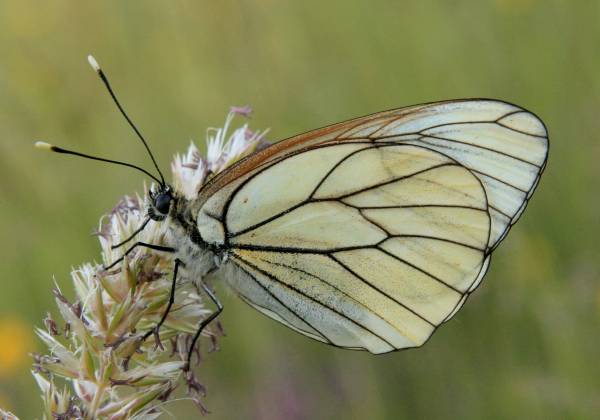
This attractive large butterfly feeds on Prunus species and used to be a pest in the orchards of southern England.
The female (pictured above) is distinguished by a brownish colouring on the leading edge of the forewing. The male, shown below, is almost entirely black and white (albeit a rather creamy white).
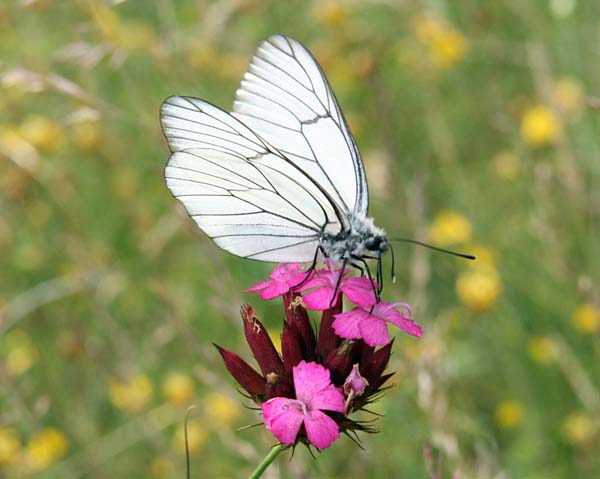
The specimens pictured here were seen in the Lot Valley, southern France.
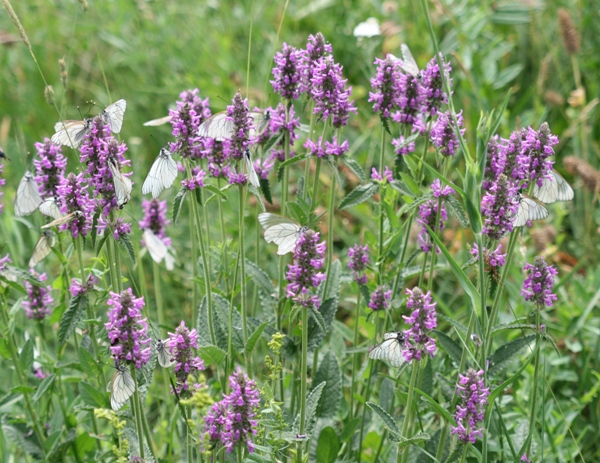
Distribution
Extinct in Britain since 1925, this lovely butterfly is still common on the mainland of Europe. The specimens shown on this page were photographed in southern France and in Bulgaria.

Lifecycle
This large butterfly is seen on the wing from early May until the end of July.
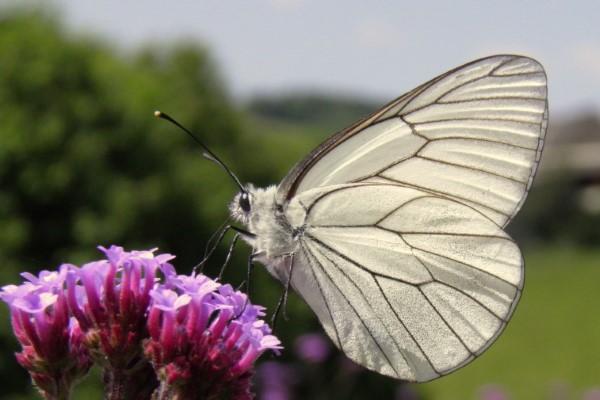
The Black-veined White butterfly's main larval foodplants are Blackthorn Prunus spinosa and Hawthorn Crataegus monygna (as well as other Crataegus species), and the longitudinally-ribbed primrose-yellow eggs are laid in patches of up to 200 on the undersides of the leaves.
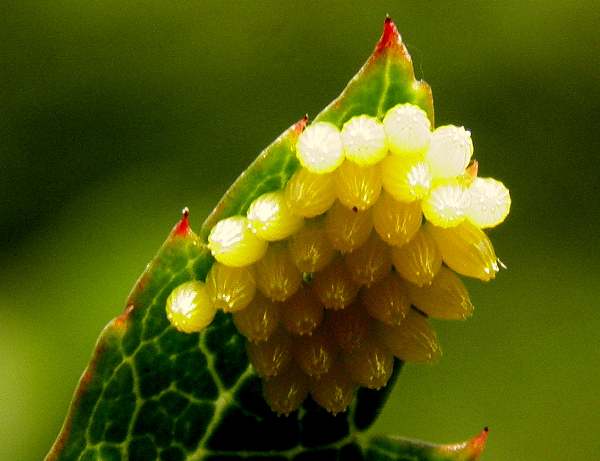
While they are immature, the caterpillars live in communal webs. When fully grown they are covered in sparse soft hairs; their bodies are black above with orange-brown subdorsal stripes, while the underside is a very pale grey.
Acknowledgements
This page includes pictures kindly contributed by Steve Jelf.
Studying butterflies and moths...
Excited at the prospect of flyfishing? So are we, and we're pretty sure you would find the Winding River Mystery trilogy of action-packed thrillers gripping reading too. Dead Drift, Dead Cert, and Dead End are Pat O'Reilly's latest river-and-flyfishing based novels, and now they are available in ebook format. Full details on our website here...
Buy each book for just £4.96 on Amazon...
Please Help Us: If you have found this information interesting and useful, please consider helping to keep First Nature online by making a small donation towards the web hosting and internet costs.
Any donations over and above the essential running costs will help support the conservation work of Plantlife, the Rivers Trust and charitable botanic gardens - as do author royalties and publisher proceeds from books by Pat and Sue.
